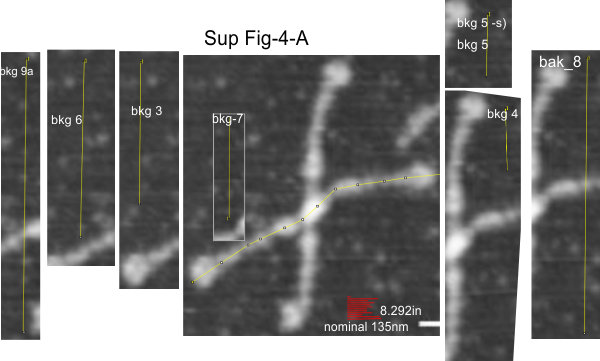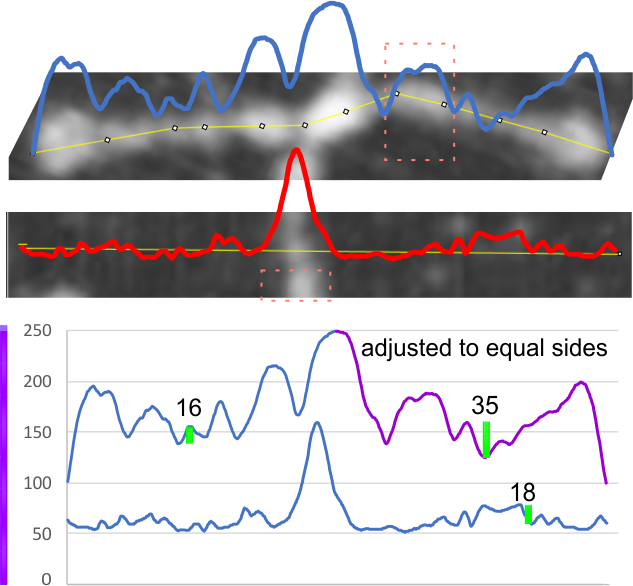 Background noise when finding the LUT plots for surfactant protein D is a problem. Its not difficult to see how the tiniest little sneeze, or faltering or airconditioner dust, ambient foaters, can create a huge impact on background dirt in all microscopy. This post is really not an examination of dirt, but of whether the peak of the LUT plots is systematically changed when a line to plot runs over some background objects and reassigns a different grayscale based on nearest neighbor or some other algorithm. I did a few tests deliberately going over the same spot, in this case the scan is anisotropic and i used it in the dimension which shows the most ripples but those peaks were identified by FIJI as similar in LUT value. For the following image, which is Arroyo, supplement Figure 4-A the background from 7 different locations parallel but not including any part of the dodecamer produced the following mean, with no background noise over 90 luminance points (0-255). The cut off line for peaks is at the 100 mark in grayscale.
Background noise when finding the LUT plots for surfactant protein D is a problem. Its not difficult to see how the tiniest little sneeze, or faltering or airconditioner dust, ambient foaters, can create a huge impact on background dirt in all microscopy. This post is really not an examination of dirt, but of whether the peak of the LUT plots is systematically changed when a line to plot runs over some background objects and reassigns a different grayscale based on nearest neighbor or some other algorithm. I did a few tests deliberately going over the same spot, in this case the scan is anisotropic and i used it in the dimension which shows the most ripples but those peaks were identified by FIJI as similar in LUT value. For the following image, which is Arroyo, supplement Figure 4-A the background from 7 different locations parallel but not including any part of the dodecamer produced the following mean, with no background noise over 90 luminance points (0-255). The cut off line for peaks is at the 100 mark in grayscale.
N:79
Sum:842
Mean: 10.65+/-sd 6.75
Variance s2: 45.61736901
Image below shows the lines from which background plots were obtained. Deliberately taken along lines against the “waves” as taking a line in between would lead to a false sense of low background noise.
Here is a comparison of the background noise vs one of the prominent peaks of an SP-D image. (not withstanding the algorithms that were used to convert that original image into grayscale).
The bottom line for this particular image would be that anything under 100 grayscale points is background, and any peak under 10 grayscale points is background. Thus a peak of 16 or 35 in the diagram below would be considered as valid.
It is a little bit disconcerting that i think the best way to assess the validity of a peak in these micrographs is to individually calculate their backgrounds (perhaps 4 plots each) then use that mean grayscale value to determine whether a plot in the SP-D arm -plots are greater than background mean background noise.
